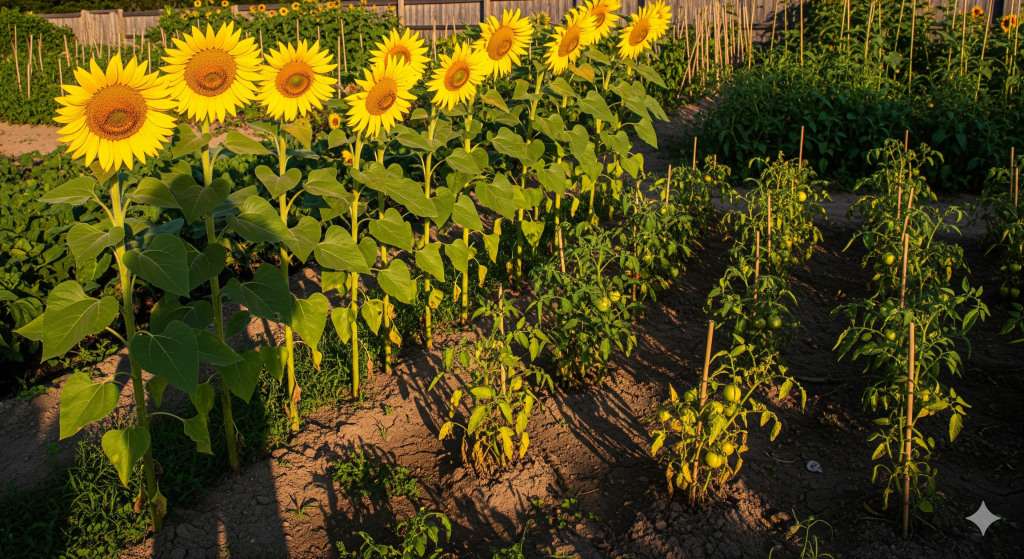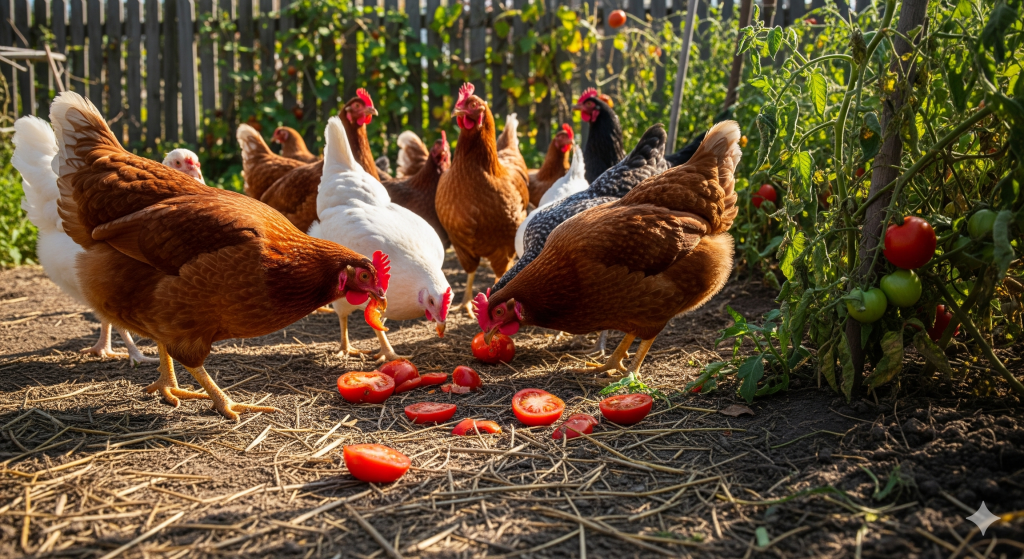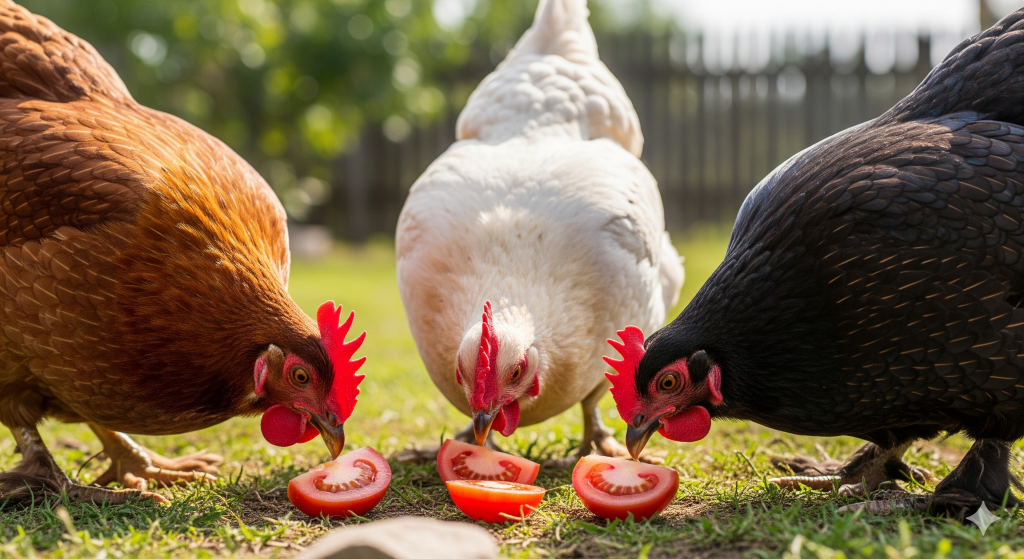Table of Contents
In the vibrant tapestry of a summer garden, few plants are as iconic as the towering, cheerful sunflower and the sprawling, fruit-laden tomato vine. Both thrive under the full sun and are symbols of a bountiful harvest. This leads many gardeners, especially those with limited space, to ask a very logical question: can you plant sunflowers and tomatoes together?
While it’s a beautiful image to conjure, the reality is that this is a challenging and generally not recommended pairing. Planting sunflowers and tomatoes in close proximity is a classic example of antagonistic planting, where one or both plants can suffer due to competition, shading, and a unique botanical phenomenon known as allelopathy.
This isn’t to say it’s entirely impossible for the determined gardener, but success requires a deep understanding of the risks and strategic planning to mitigate them. This comprehensive guide will explore the complex relationship between these two garden giants, outlining the best practices for planting them near each other, the challenges of container gardening, and what other plants make better or worse companions for the mighty sunflower.
Ready to Take Your Self-Sufficiency to the Next Level?

If you love the self-sufficient lifestyle, this is the only guide you’ll ever need. Learn how to generate your own power, secure your water supply, and become truly independent. No fluff, just actionable plans.
➡️ Check out The Self-Sufficient Backyard and start your journey today!
How to Plant Sunflowers with Tomatoes
If you are set on trying to grow these two in the same garden, success is entirely dependent on mitigating the significant disadvantages they impose on one another. This involves a thoughtful approach to positioning, spacing, and variety selection to give both plants a fighting chance.
Strategic Positioning: The North Star Rule
The single most critical factor is managing shade. Sunflowers, especially traditional tall varieties, can grow to heights of 8-12 feet or more, casting a large and dense shadow as the sun moves across the sky. Tomatoes are sun-worshippers, requiring at least 6-8 hours of direct, uninterrupted sunlight to produce a healthy and abundant crop. If a tomato plant is shaded by a sunflower, its growth will be stunted, it will become leggy as it stretches for light, and its fruit production will be severely diminished.
To counteract this, you must plant the sunflowers on the north side of your tomato patch. In the Northern Hemisphere, the sun travels across the southern part of the sky. By planting the tall sunflowers to the north, their shadows will be cast away from the tomatoes for the majority of the day, ensuring the tomatoes still receive the full sun they desperately need.
Generous Spacing is Non-Negotiable
Both sunflowers and tomatoes are incredibly heavy feeders and have extensive root systems that compete aggressively for water and nutrients. Planting them too close together will result in a subterranean battle that neither plant will truly win.
- Minimum Distance: Provide a minimum of 3 to 4 feet (about 1 meter) of space between the base of your sunflower stalks and your tomato plants. This gives their respective root systems room to expand without directly overlapping.
- Soil Preparation: Because both are so demanding, you must prepare the soil with an abundance of rich organic matter. Amend the entire area with well-rotted compost or manure before planting. You will also need to be diligent about watering and may need to provide supplemental balanced fertilizer to both crops throughout the season to keep up with their demands.
Choose Your Varieties Wisely
Not all sunflowers are giants. Consider planting dwarf or smaller varieties, such as ‘Teddy Bear’, ‘Elf’, or ‘Sundance Kid’, which top out at a more manageable 2-4 feet. A smaller sunflower will cast a smaller shadow and have a less demanding root system, significantly reducing its negative impact on nearby tomatoes.
Can You Plant Sunflowers with Tomatoes in Pots?
Attempting to plant sunflowers and tomatoes together in the same pot is highly discouraged and almost certain to fail. The intense competition that is problematic in the ground becomes exponentially worse in the confined space of a container.
In a single pot, the two plants will engage in a relentless battle for the limited volume of water, nutrients, and soil. The sunflower’s aggressive root system will likely dominate the container, leaving the tomato plant starved and root-bound. Furthermore, even a dwarf sunflower will quickly shade the tomato in a pot, and the allelopathic effects will be highly concentrated in the small amount of soil.
If you are a container gardener, the only viable solution is to plant them in separate, large containers. A single indeterminate tomato plant needs a pot that is at least 15-20 gallons to thrive. A large sunflower variety would need a similarly sized container to anchor its height and satisfy its needs. You can then place these pots near each other, still following the “sunflower to the north” rule to manage sunlight.
What Not to Plant Next to Sunflowers?
The allelopathic nature of sunflowers makes them poor companions for several common garden plants. The chemicals they release can be particularly harmful to plants that are sensitive to growth inhibitors.
- Potatoes: Potatoes are famously sensitive to the allelopathic compounds released by sunflowers. Planting them nearby can result in significantly reduced tuber formation and stunted growth.
- Pole Beans: The growth of pole beans can be severely inhibited by sunflowers. The beans will struggle to climb and produce, often appearing weak and yellowed.
- Fennel: Like sunflowers, fennel has its own allelopathic properties and is generally a poor neighbor to most garden plants.
What Is the Best Companion Plant for Sunflowers?
While sunflowers can be challenging neighbors, they do have a few friends in the garden. The best companions are those that are either unaffected by their allelopathic tendencies or those that offer a mutual benefit.
- Corn: Sunflowers and corn share similar growing needs and structure, and they do not seem to negatively impact each other.
- Squash and Pumpkins: These low-growing, vining plants can act as a living mulch around the base of tall sunflowers. Their broad leaves help suppress weeds and keep the soil cool and moist, which benefits the thirsty sunflowers. This combination mimics the classic “Three Sisters” planting method.
- Chives and Onions: Members of the allium family can be planted near the base of sunflowers to help deter aphids.
- Marigolds: French marigolds are excellent companions for almost any plant, as they can help deter nematodes in the soil and other pests above ground.
Conclusion
The vision of golden sunflowers arching over vibrant red tomatoes is a picturesque one, but in practice, it’s a partnership fraught with challenges. The combination of intense shade, aggressive competition for water and nutrients, and the sunflower’s natural allelopathic properties makes this a pairing to avoid for most gardeners. Forcing these two rivals to coexist often results in stressed plants and a disappointing harvest from both.
However, for the adventurous gardener with ample space, it can be attempted with meticulous planning. By strictly planting sunflowers on the north side of tomatoes, providing very generous spacing, amending the soil heavily, and choosing smaller sunflower varieties, you can mitigate some of the risks. Ultimately, the most reliable path to a bountiful harvest is to give both sunflowers and tomatoes the space and sunlight they deserve by planting them in separate, dedicated areas of the garden, surrounded by their more compatible and beneficial companions.



